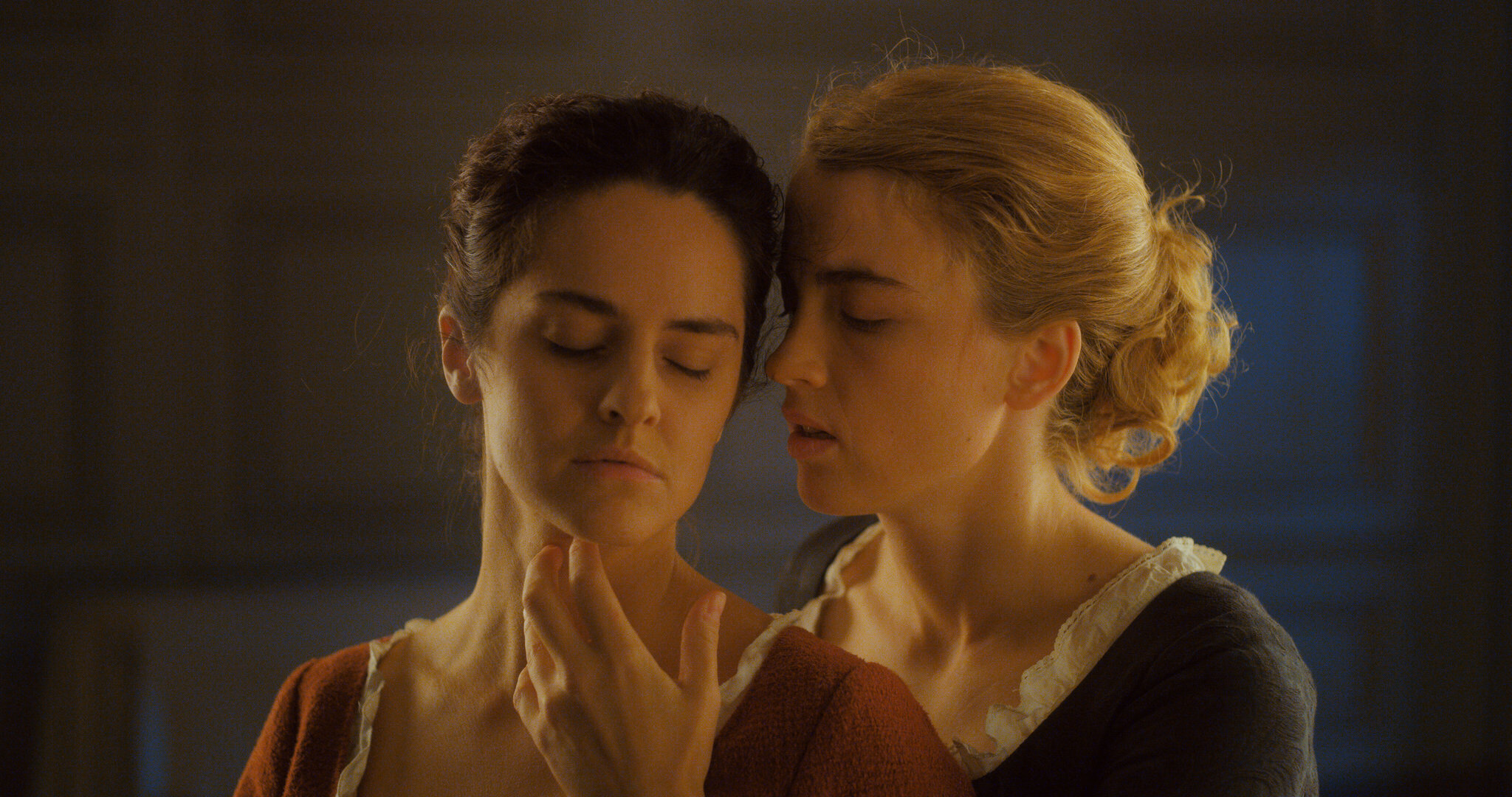Portrait of a Lady on Fire: A Slow Burn Masterpiece
By ammy y. ‘22
From French writer and director Céline Sciamma comes Portrait of a Lady on Fire, a searing film detailing a late-18th century queer romance. The premise is simple: Marianne, a young painter, is commissioned to paint Héloïse, a former convent girl, by Héloïse’s countess mother. Once the portrait is completed, it will be sent to a Milanese nobleman; should he approve, he and Héloïse will be wed. However, Héloïse quietly protests this arrangement by refusing to sit for a portrait, and thus Marianne must act as Héloïse’s walking companion by day while secretly painting Héloïse at night. This arrangement soon blossoms into a fiercely passionate relationship between painter and painted—a relationship that is doomed by circumstance to burn brightly and die as quickly as an ember from flame.
It is from this relationship arc that the film draws its fire motif seen in the title. The film’s complexity lies not in its plot, but in the subtle nuances Sciamma imbues in her characters: Héloïse’s initial reluctance to gift Marianne with a true smile, Marianne’s tendency to rub at her temples when she is unsure. The dialogue is sparse but profound, forcing the audience to truly listen and take into account both what is being said and what is left unsaid. It clearly resonated with audiences as Portrait of a Lady on Fire won Best Screenplay during the 2019 Cannes Film Festival.
A moment that struck me as especially beautiful was when Marianne met Héloïse for the first time. The latter broke into a run toward a cliff overlooking the sea, almost pitching herself over the edge before catching her body and saying, “I’ve dreamt of that for years.” “To die?” Marianne asks in response. “To run,” Héloïse replies. Beyond its profound beauty, the film has subtle sociopolitical undertones. There is a scene in which the young housekeeper, Sophie, must have an at-home abortion. Marianne looks away, but is prompted by Héloïse to watch. In this way Sciamma confronts a taboo subject and refuses to omit the thornier parts of women’s lives. Such depiction forces the audience to find the beauty and strength in sorority. It also draws attention to the fact that this is a film orchestrated by a woman and deconstructs the male gaze of queer relationships. In popular media, there is a tendency to hypersexualize and fetishize lesbian representation. Take 2013’s critically acclaimed Blue is the Warmest Color for example; although beautiful, there is a ten-minute sex scene completely orchestrated by the film’s male director. In Sciamma’s opinion “That is a film made by a straight man with straight women. I’m a lesbian, so I think I know about intimacy and lesbian imagination. We are making it closer to reality.” Her effect on the film is felt keenly. Even in moments of intense passion, there is no unwanted nudity or objectification for the sake of voyeuristic pleasure—merely two women reveling in their limited freedom to explore the other.
I truly enjoyed this film, but I will admit that it is not for everyone. The romance is the definition of slow-build, conveyed more through searing gazes and silent movements. There is no Notebook-esque kiss in the pouring rain, nor is there a scene where the two leads sail off on a boat towards the sunset while Céline Dion belts in the background. There is some patience required to become invested in the relationship between Marianne and Héloïse. I personally found the wait deliciously satisfying. With its haunting music and incredible cinematography, it’s a treat for the senses as well. No other film, in my personal experience, beats the aesthetic appeal of the wind-swept cliffs, crashing waves, gloomy Gothic halls, and firelight bathed faces that this film provides. (In fact, as an artist myself, I felt an itch to sketch out every other frame, since they were all so beautiful). Should the fact that the film is entirely in French deter you from watching it? As someone whose entire knowledge of the French language is relegated to “merci,” “bonjour,” and “je ne sais pas,” I still say absolutely not. After all, that is what subtitles are for. In the words of the inimitable Bong Joon Ho, Oscar-winning director of Parasite (another absolutely incredible film!), “once you overcome the 1-inch-tall barrier of subtitles, you will be introduced to so many more amazing films.” So go watch it if you have the chance. It’s a once-in-a-lifetime experience.

